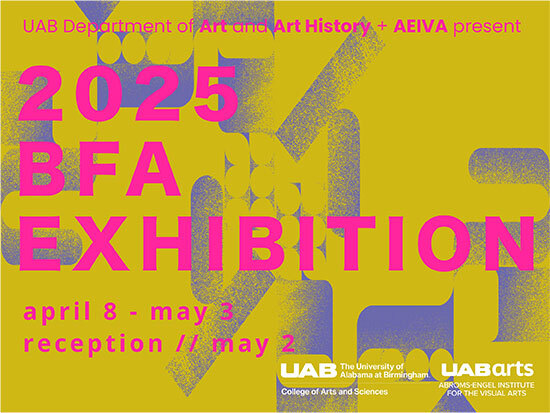It's a big shift for the old steel town. If all plans take root, Red Mountain Park will reclaim four miles of ridgetop mining lands and become one of America's largest urban parks. To the east, Ruffner Mountain Nature Center, one of the country's biggest urban nature reserves, will add up to 700 acres. The Railroad Reservation Park will revive abandoned blocks downtown. And 65 miles of greenways, built along cleaned-up creeks and railway beds, will stretch from Bessemer to Trussville, connecting parks in between.
Going green, it seems, is in. Philanthropic groups, corporations, governments, and private citizens are all contributing time and money to the cause. Supporters of Red Mountain Park, who have raised funds through rock concerts and MySpace mailings, recently purchased property. Construction has begun on the Railroad Reservation's first phase. And community meetings are generating ideas for other green spaces.
Echoes of the Past
For Marjorie White, this new push for parks brings a sense of déjà vu. As director of the Birmingham Historical Society, she recalls that green space was also a hot topic in the 1920s, when the city was an industrial boomtown. To serve a growing population, civic leader M.P. Phillips and a newly created park board hired the Olmsted Brothers to develop a comprehensive plan for Birmingham. It was familiar ground for the firm. Founded by Frederick Law Olmsted, often considered America's premier landscape architect, the company designed New York's Central Park, the U.S. Capitol grounds, and city parks nationwide. "They believed it was important for everyone in an urban area to have access to a park—for it to be an experience in everybody's lives," says White, a UAB retiree who helped establish the university's foreign languages department. In the 1920s, parks were valued as venues for supervised play, which was considered crucial to childhood development, and as natural escapes where the "poor nerve-strained urban dweller" could find physical and mental rejuvenation.
The Olmsted Brothers created a 20-year plan for Birmingham that met all of these needs. It envisioned large parks encircling the industrial core, filling the floodplains of Valley and Village creeks and preserving the forested ridge of Shades Mountain. Small neighborhood parks would provide active recreation space, while several existing parks would expand to incorporate a full range of natural scenery. Mountaintop parkways would connect the larger parks and, in the words of the Olmsted proposal, "avoid ugliness along...the usual channels of daily passenger travel."
The plan would not only beautify the city, but also protect it. Reserving stream banks and floodplains for parks would help control high water and keep both people and property safe. Preventing ridgetop development would reduce water runoff and erosion and help contain urban sprawl. "It was a very sophisticated look at this region," says White.
So why wasn't the plan fully implemented? Phillips, the local booster who White says truly understood the Olmsted approach, died in 1925, severing the most substantial link with the firm. Then, under new leadership, the park board shifted its focus to recreational facilities, building golf courses and swimming pools. And in the midst of a real-estate boom, the mountaintops and floodplains, never set aside for parks, quickly filled with houses, businesses, and the airport.
Current park plans have a better chance of survival because "now there's a real grassroots constituency for parks," says White. "Everybody was too busy working in the 1920s. Few people had a lot of leisure time." Another change—which White calls both good and "complicated"—is that one park board isn't trying to plan everything. Red Mountain Park, for instance, is under state oversight, while creation of the Railroad Reservation involves Birmingham's city government and Friends of the Railroad District; Ruffner Mountain is a private nonprofit group.
Re-Creation Through Recreation
Now, as in the 1920s, many park supporters say green spaces are beneficial for public health. Diane Grimley, Ph.D., chair of UAB's Department of Health Behavior, agrees that local parks and greenways encourage physical activity. "Parks provide attractive, accessible places to walk, jog, bike, or just relax," and that, in turn, can help control weight and cholesterol levels, manage diabetes, prevent heart disease, lower cancer risk, and slow the bone loss that comes with aging. On a wider scale, Grimley adds, green spaces act as a pollution buffer; soil absorbs urban runoff and filters contaminants before they wash into waterways, and trees "drastically improve air quality" by removing pollutants from the air and "sequester carbon dioxide, mitigating the impact of the greenhouse effect."
Along with a healthier community, the parks also have the potential to grow a fresh image for Birmingham. Despite the city's economic and social advances, "I think Birmingham is still perceived as an industrial city; people outside the South are expecting it to look like Cleveland or Detroit," says Robert Corley, Ph.D., director of UAB's Global and Community Leadership Honors Program and former director of the Center for Urban Affairs. "We founded this city on natural resources—iron ore and coal—yet one of the resources we haven't taken full advantage of is the natural beauty of the place."
Image is everything as cities compete for residents, visitors, and businesses. "The reality now is that young people choose where they want to live, and then they find a job," Corley explains. "It's become really important to develop quality-of-life amenities to attract these young people."
For UAB, bringing smart people to Birmingham is particularly crucial. "When we are trying to recruit, something like a Red Mountain Park is a tremendous asset," Corley says. UAB counsel and Friends of the Railroad District board member W. John Daniel adds that the Railroad Reservation, located just a few blocks from campus, will benefit a university not known for wide-open spaces. "UAB has a lot of people who like urban dwelling, and this is going to be something great for them. There's going to be a lake, sloping fields, and places to jog or throw a Frisbee or run their dogs."
Green Follows Green
While the Olmsted plan grew out of an economic boom, today's park supporters hope to create a new upswing in the local economy. They're encouraged to see that residential and retail developers are eyeing land around the Railroad Reservation—even before major construction begins—and that communities along the planned greenways are using them to revitalize downtown areas and open new avenues of development. But will the investment yield dividends?
Robert Robicheaux, Ph.D., chair of UAB's Department of Marketing and Industrial Distribution, says green spaces can indeed bring greenbacks. "Almost everyone wants to live in a community that looks and feels good and provides ready and ample space for relaxation and fun. Business leaders want those things for themselves and for their employees and their families," he says. "Workers who are unhappy with their living space tend to be less productive and more likely to leave the area."
In addition, parks can potentially reverse the "downward spiral" that occurs when residents of older urban communities move to greener, cleaner suburbs—leading to lower sales for area merchants, reduced capacity to provide essential services, and declines in property taxes and property values that drive out even more residents. Chattanooga invested $356 million in public and private funds into its downtown riverfront revitalization project, and as a result, Robicheaux says, "the number of businesses and full-time jobs in the area more than doubled, assessed property values increased 127.5 percent, and tax revenues doubled." And, Grimley says, recent studies in other parts of the country show that high levels of green space may help reduce crime.
However, Robicheaux notes, "new parks and green spaces alone will not cause developers or businesses to look more favorably upon Birmingham" or lead to economic prosperity. Parks must be "components of comprehensive, coordinated, and smart growth plans for development. We have lots of work to do across a broad array of challenges before our strategic position can be changed positively and significantly."
Beyond economic growth, the hope is that the parks will help bridge historic divides. Planners say the Railroad Reservation Park, which may eventually stretch from Interstate 65 to Sloss Furnaces, could connect downtown with UAB. Many of the greenways will reclaim parts of communities ravaged by years of flooding or pollution. And Red Mountain Park could become common ground for socioeconomically diverse neighborhoods along both sides of the mountain. But Corley cautions that "it's probably not accurate to say that this could be a great social leveler," since less affluent people often don't have the free time—or transportation—to enjoy parks as often as those with more money. However, using the parks to host shows and festivals could attract "a lot of different kinds of people from different income levels" and help draw the community together, he notes.
In any case, White says parks are the future of the city. "To be surrounded by undisturbed green space is going to be really important" in a sprawling metro area. She adds that the Olmsted proposal, reprinted by the historical society, is influencing today's planners; in fact, many proposed parks and greenways overlap with sites mapped in the 1920s. "There's a wonderful quote [in the plan]. They say you have to buy this land now or it will be gone forever," White says. "We are being given our second chance. We shouldn't lose it."
By Charles Buchanan


